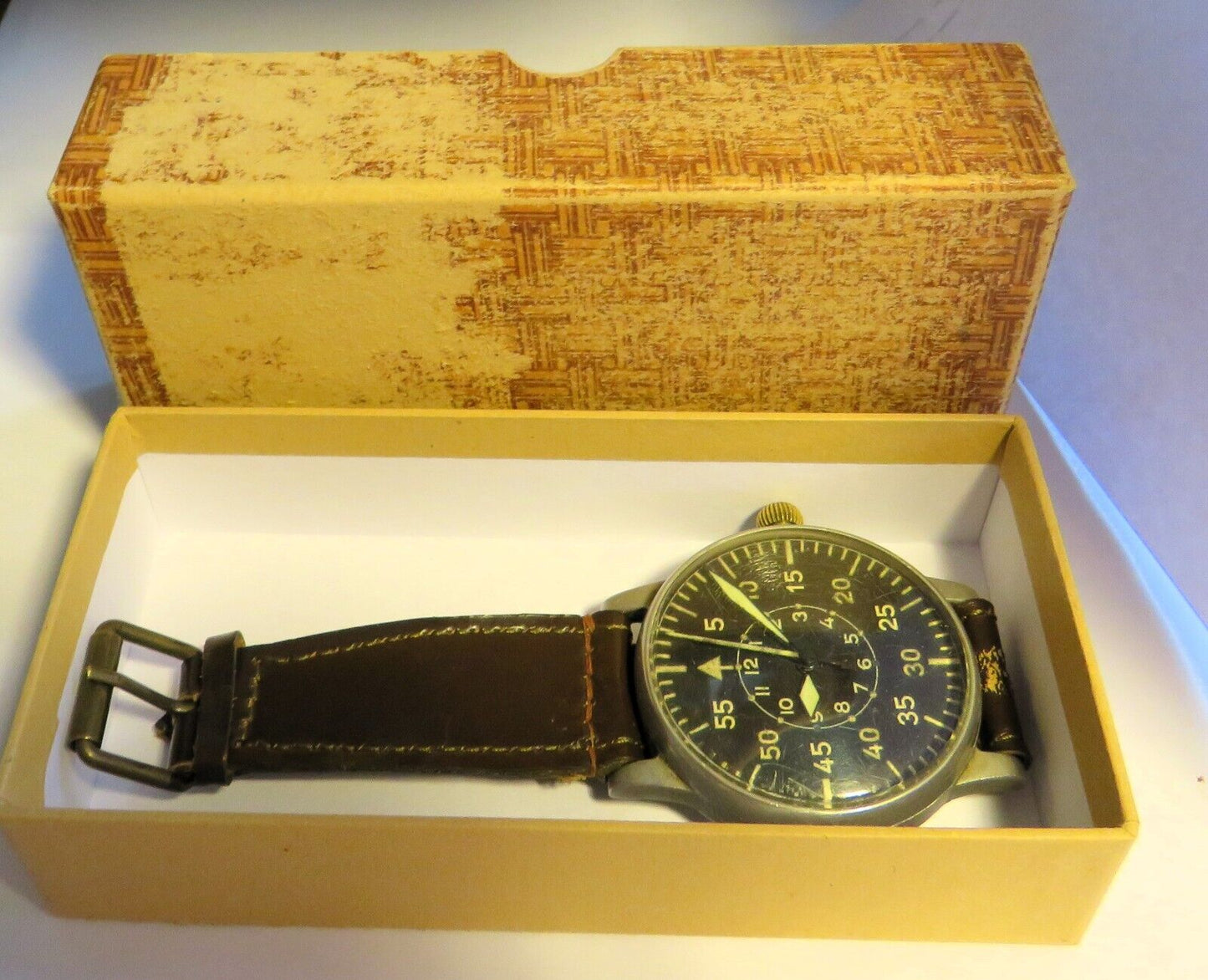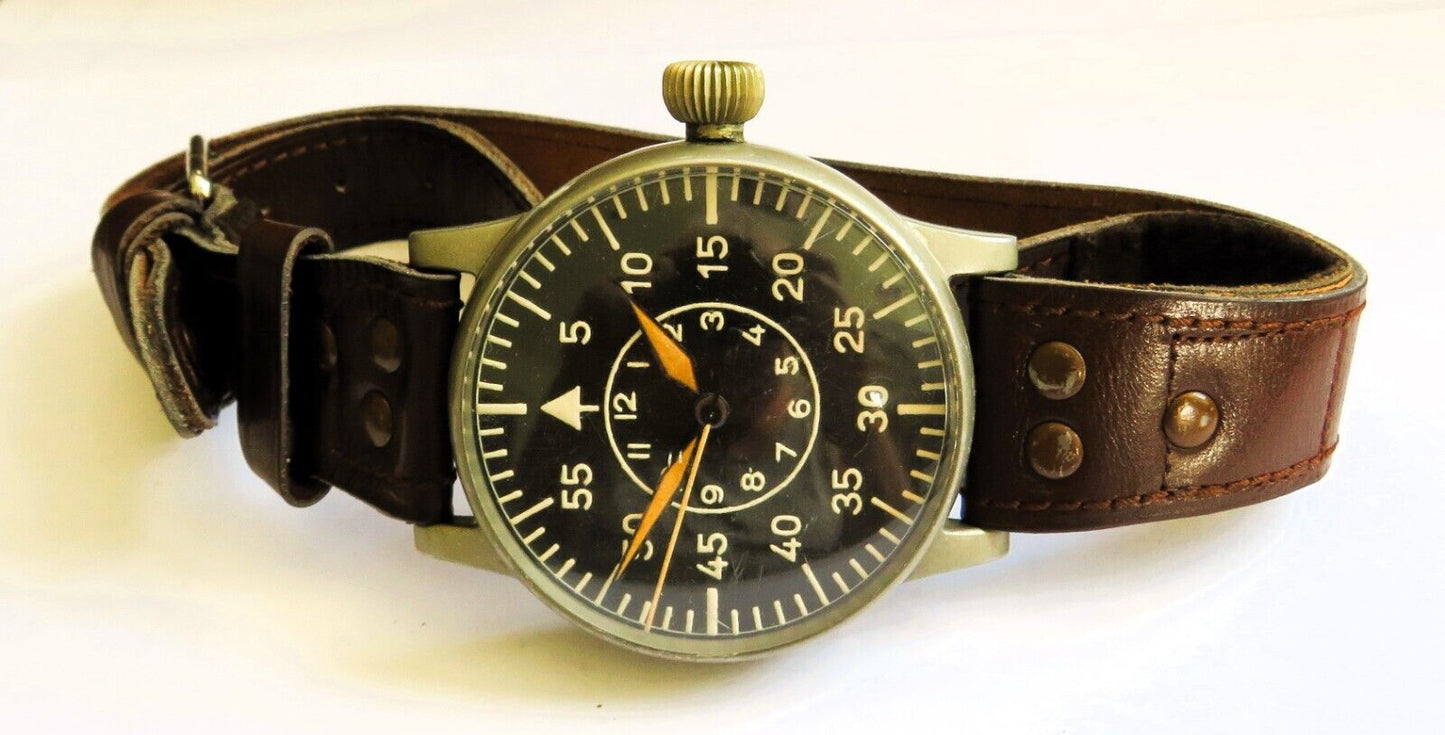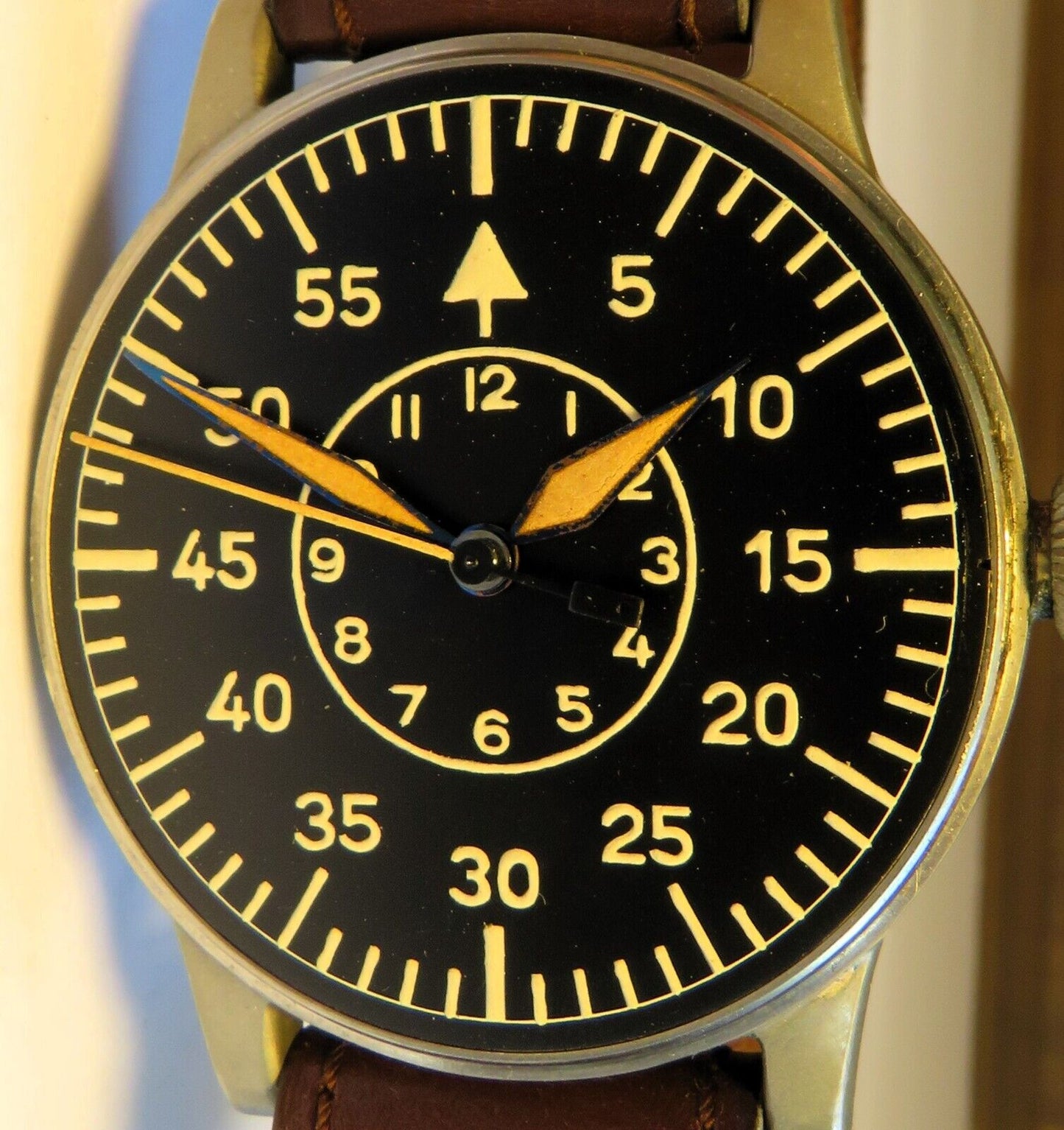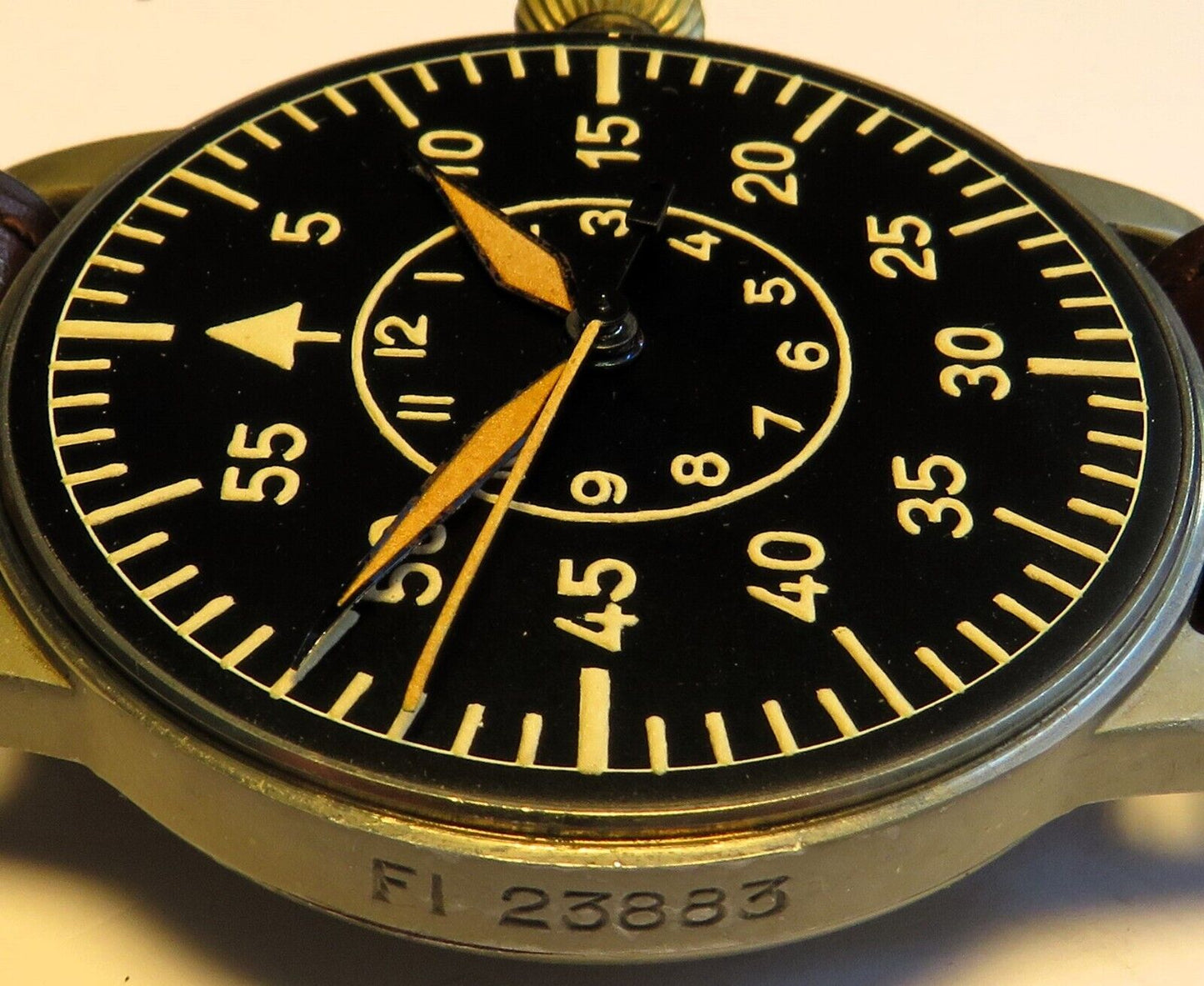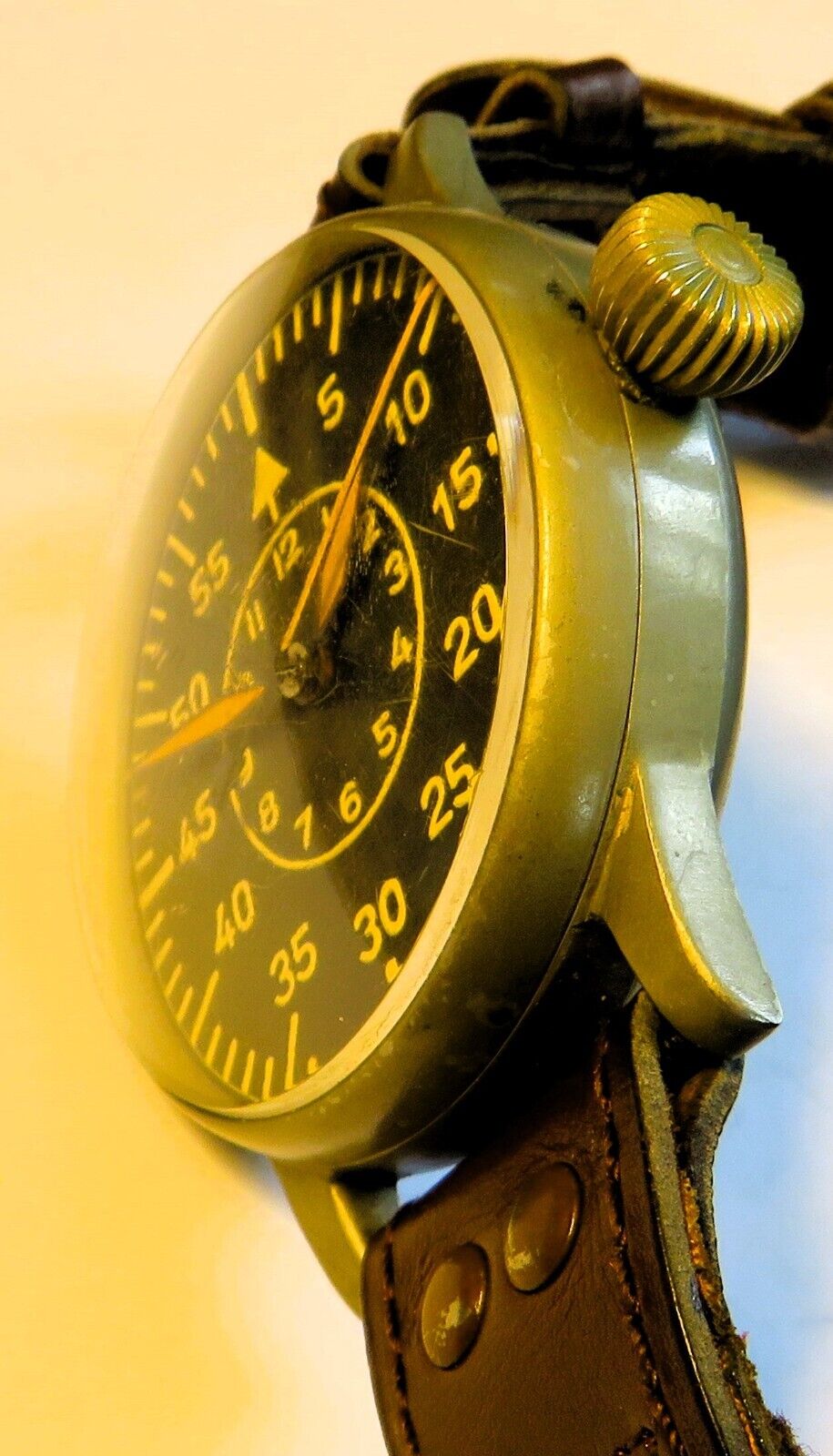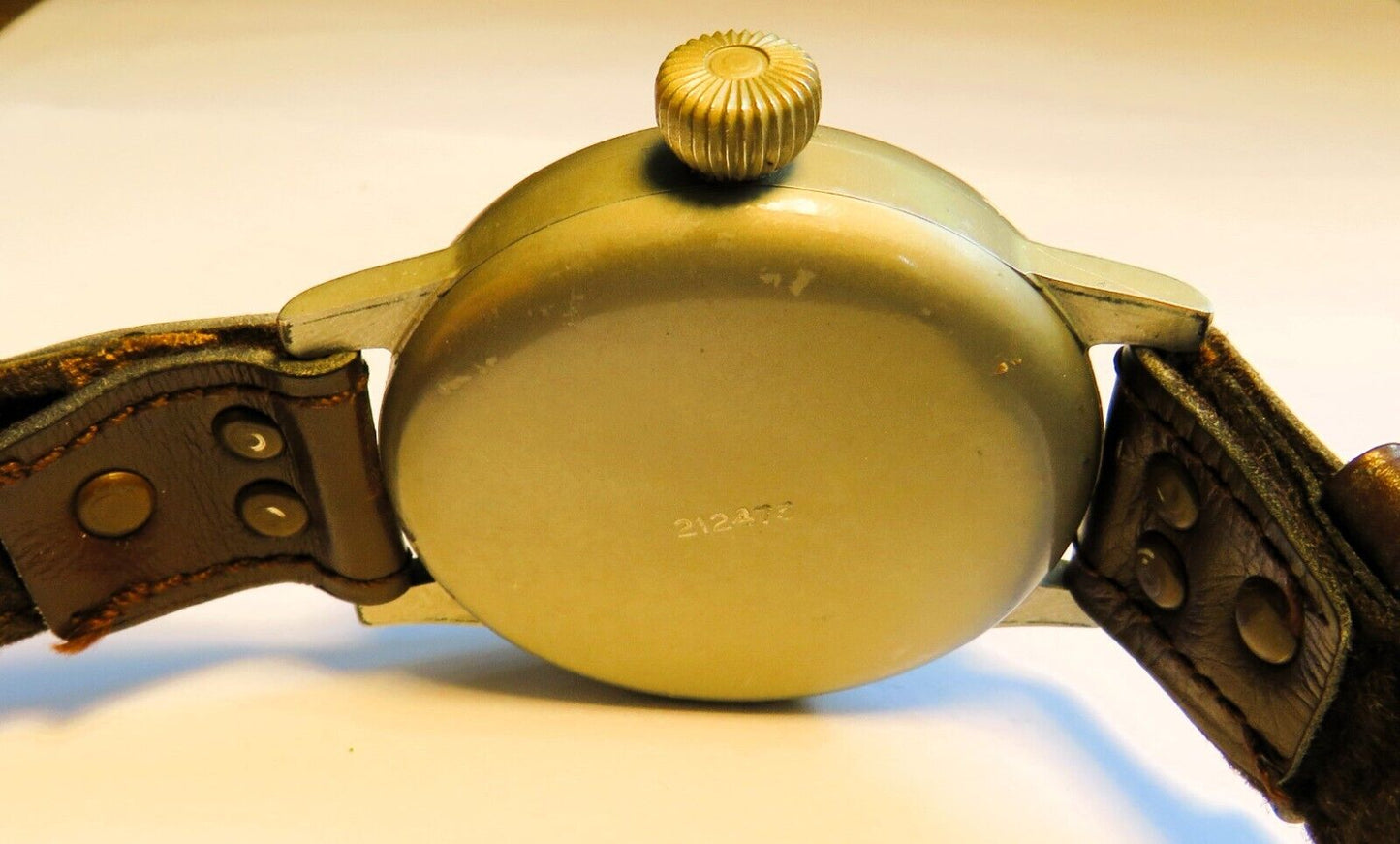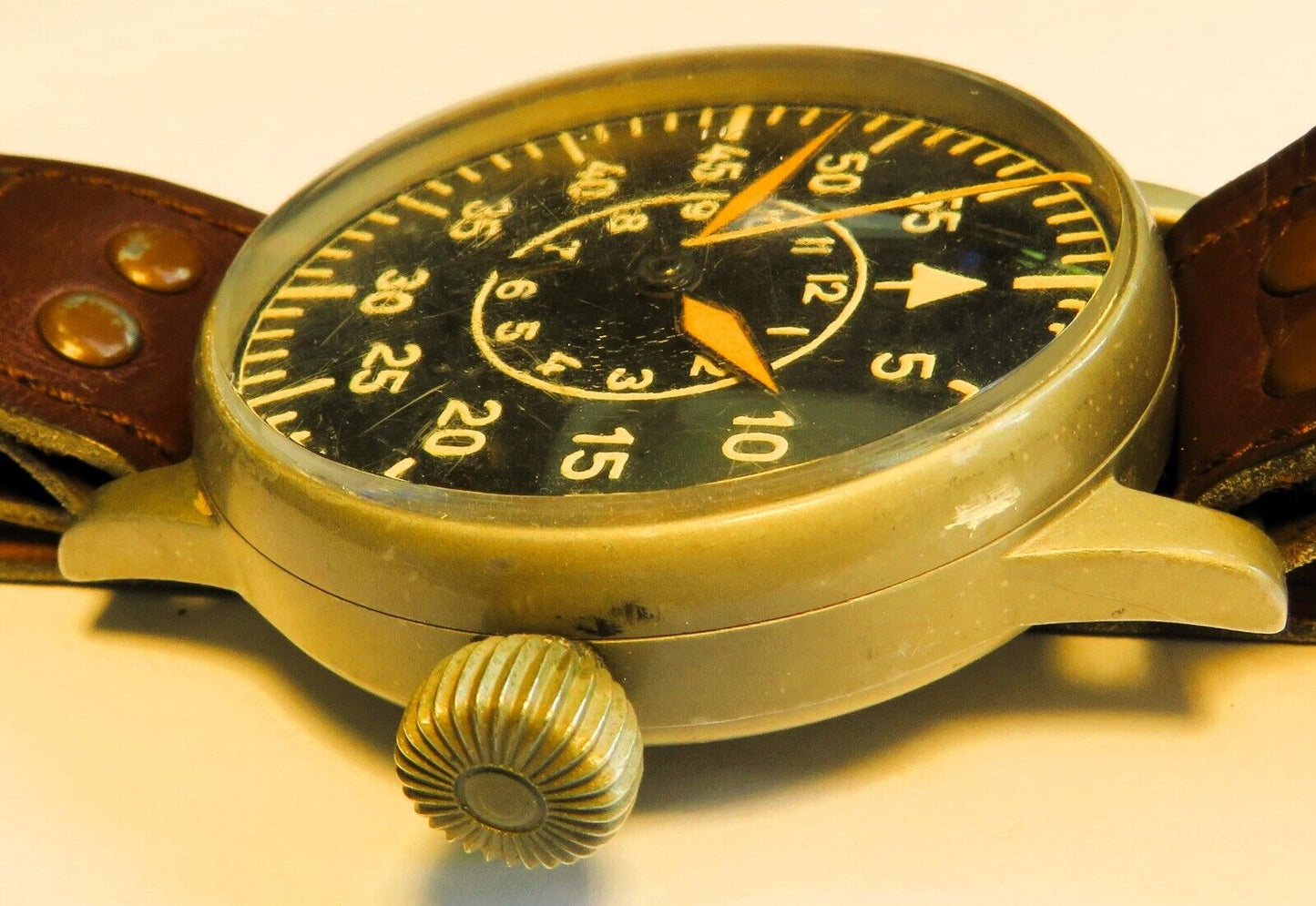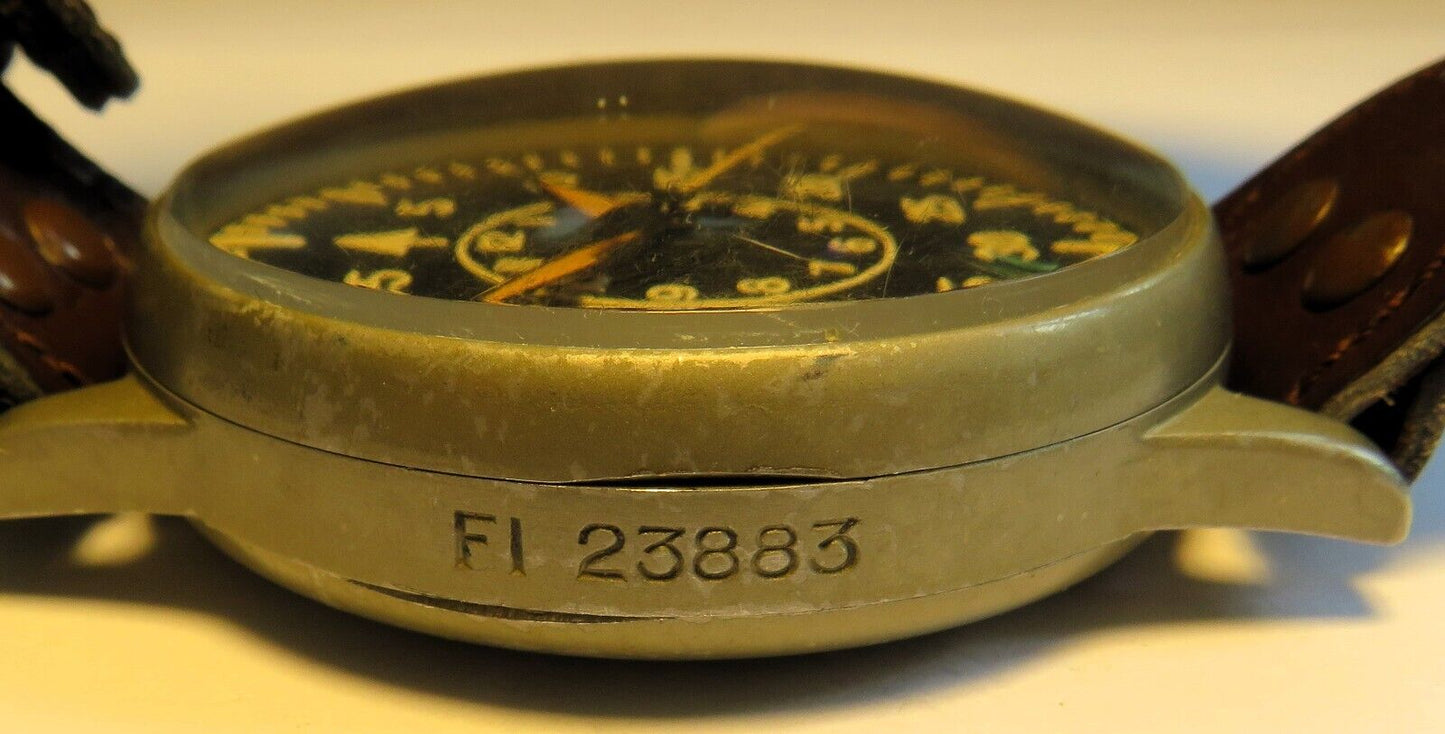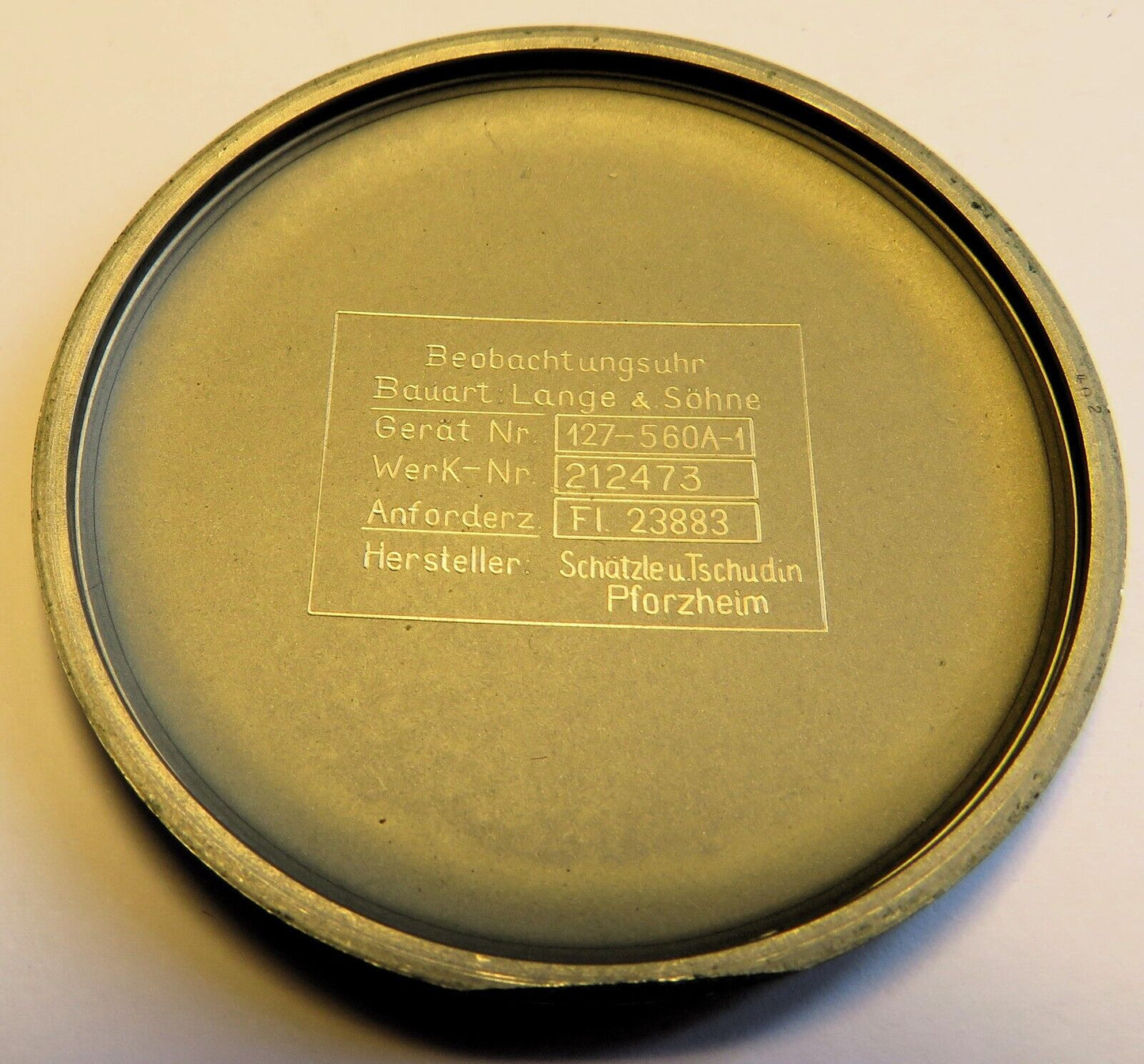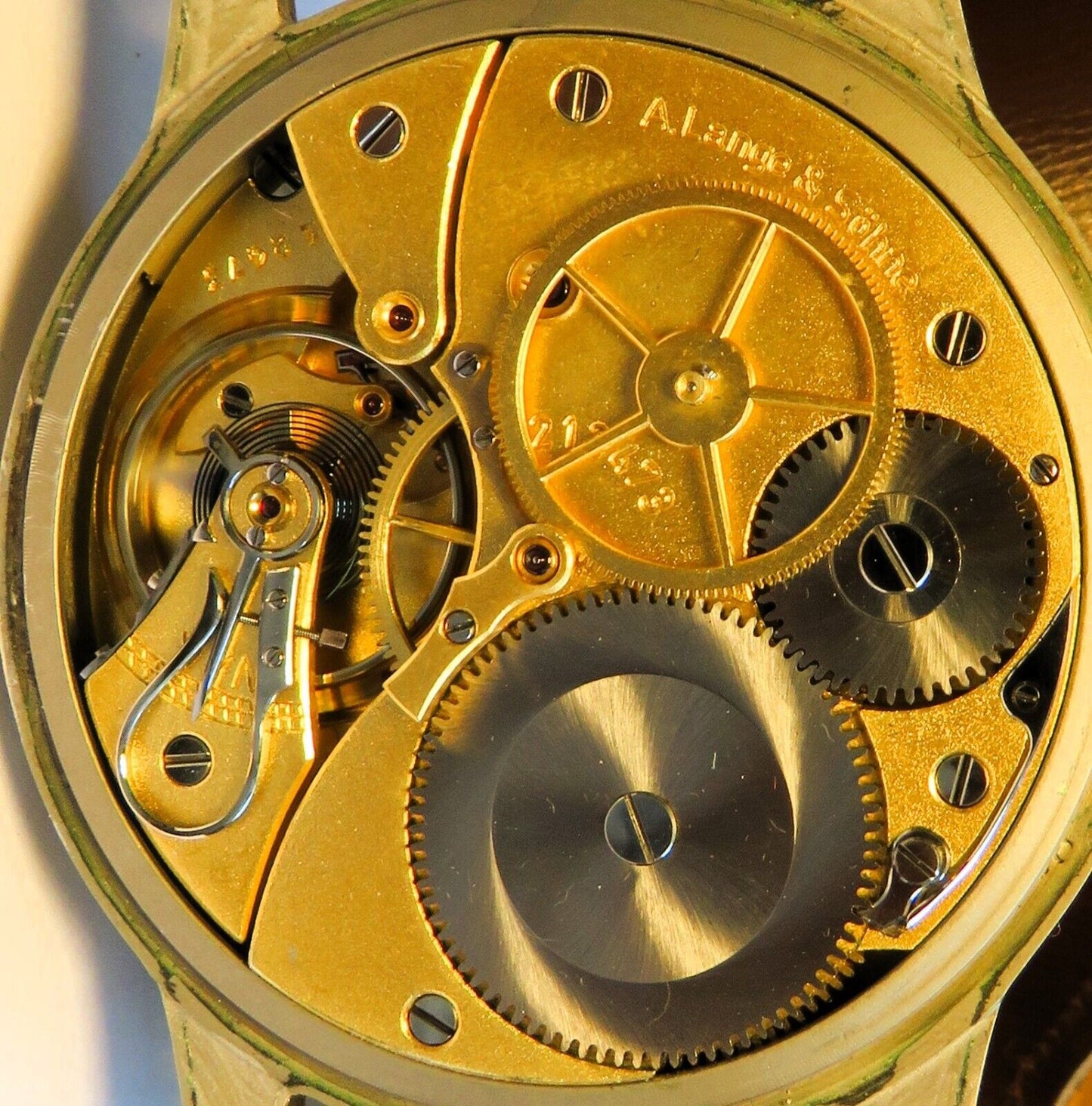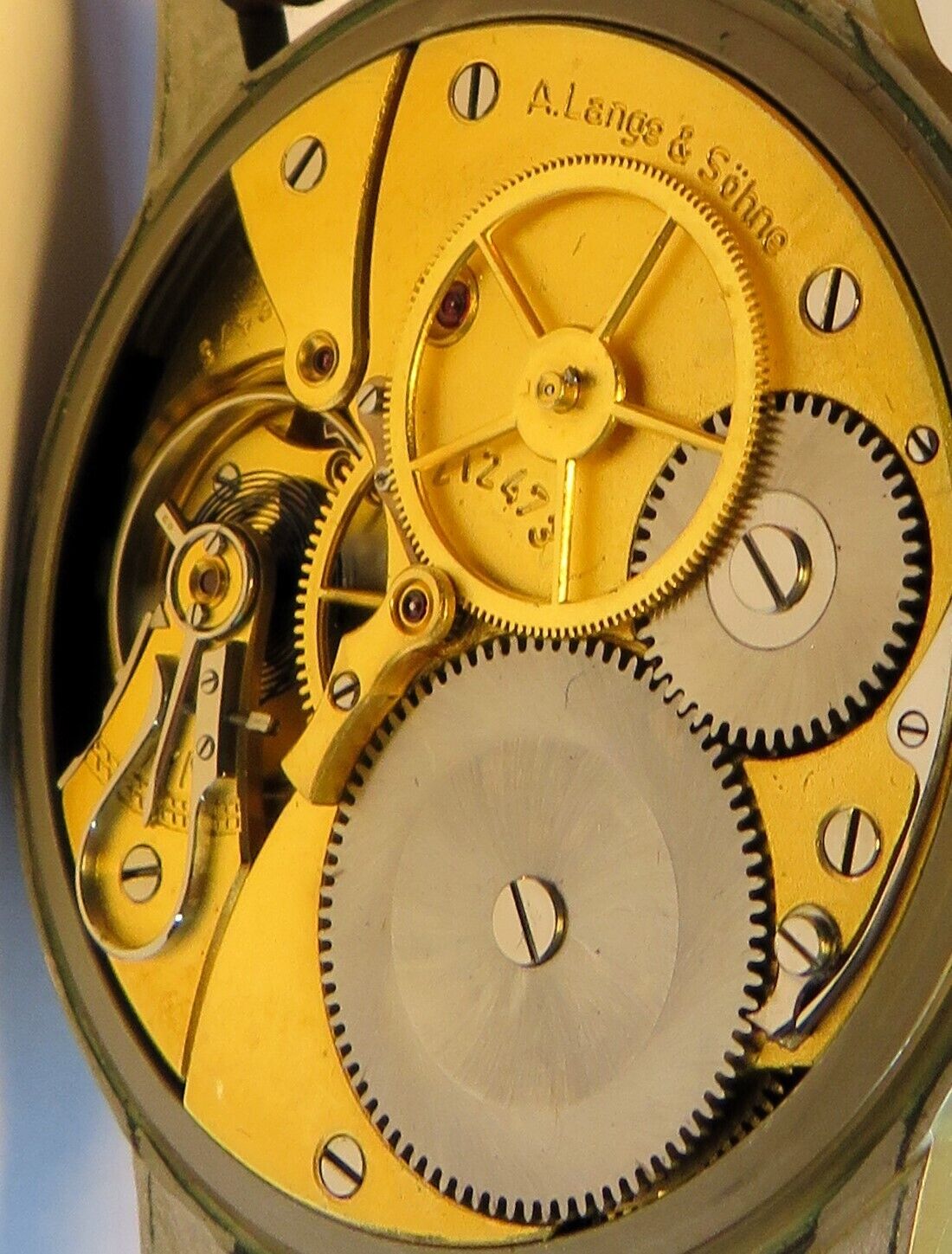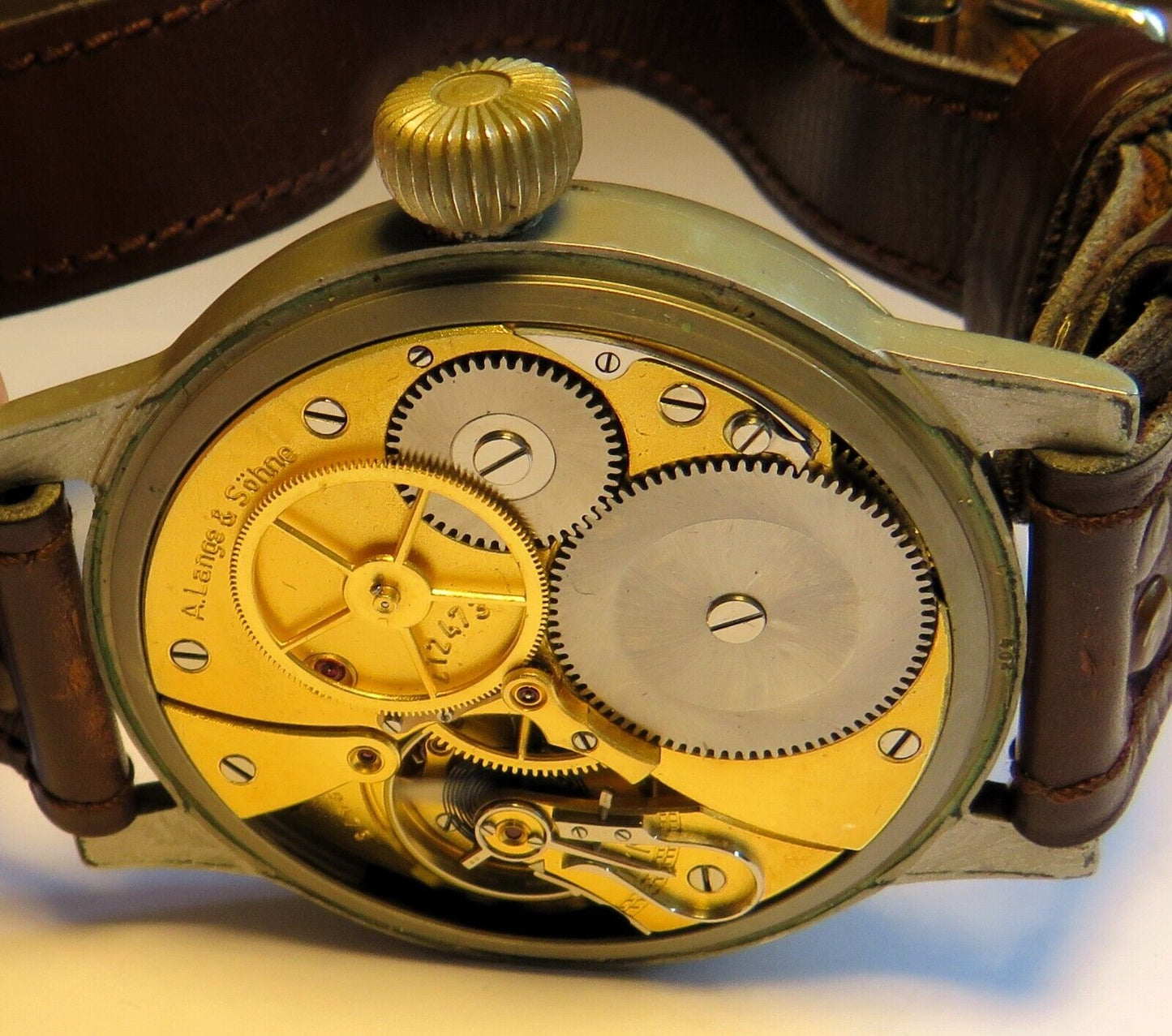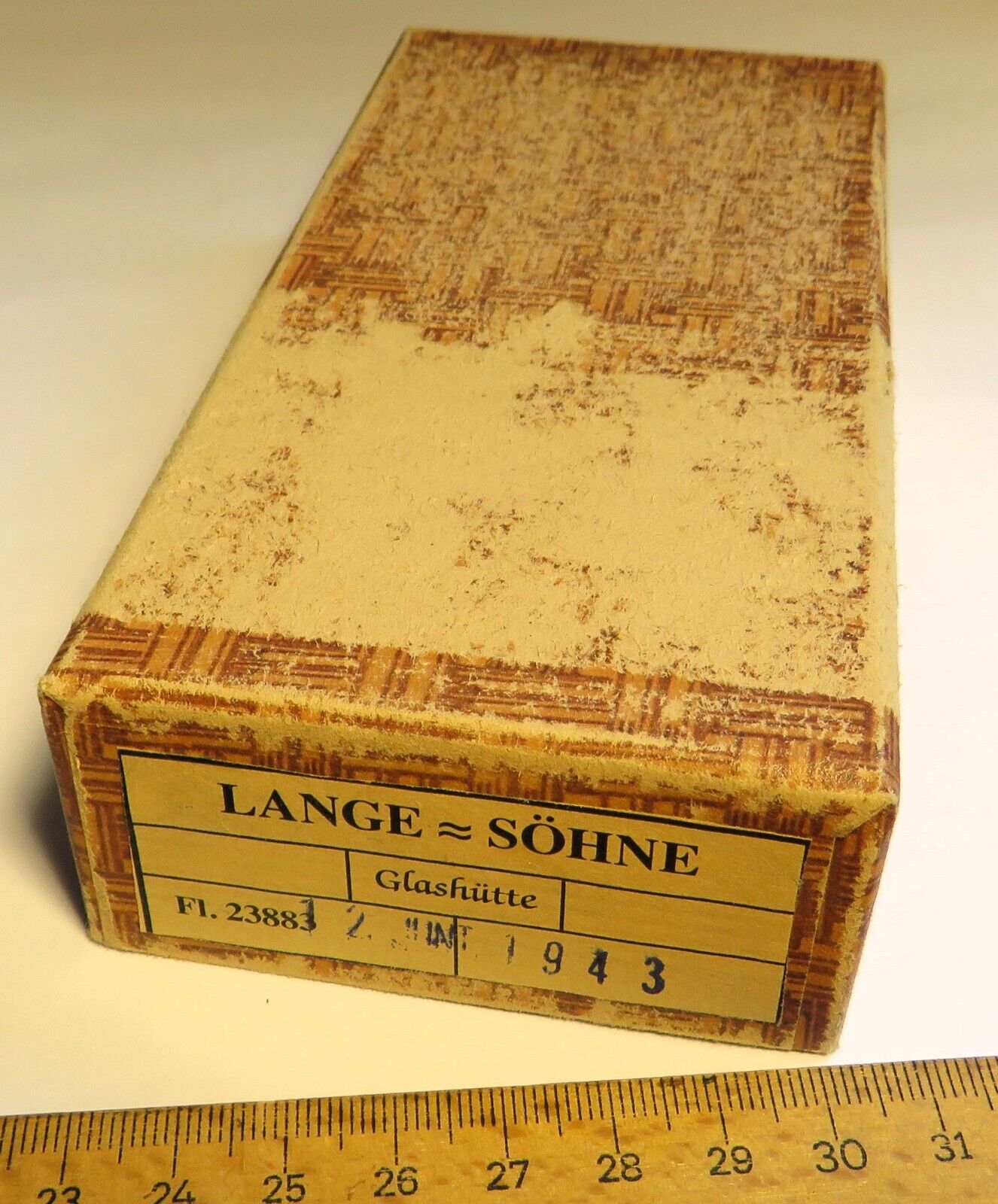Lange & Söhne
Lange & Söhne pilot's watch B-Uhr observation watch Luftwaffe WW2 OVP Schätzle
Lange & Söhne pilot's watch B-Uhr observation watch Luftwaffe WW2 OVP Schätzle
Couldn't load pickup availability
Rarest, large pilot's wristwatch, Model B with central second hand, A. Lange & Söhne Glashütte i. Sa., No. 212473 (signed three times identically on the case back and on the movement!)
It is delivered in the very, very rare original packaging, as this magnificent piece of military watch history was delivered to the Reich Air Force on March 14, 1943
This magnificent artifact and piece of military watch history was finally assembled at Schätzle and Tschudin in Pforzheim
Well-known partner and assembly companies for Lange&Söhne B-watches until 1945:
Previously known foreign companies that repaired and completed aviator observation watches caliber 48.1 from the Glashütte company A. Lange & Söhne until 1945.
- Wempe; Hamburg
- Näher & Schätzle; Pforzheim
- Conrad Felsing; Berlin
- Fischer & Trabant; Pforzheim
- Deiter Company; Essen
- LG; Vienna
- Schätzle & Tschudin; Pforzheim
- Schiron; Stuttgart
- Metall-Lago, Vienna
Description:
Large pilot's wristwatch with central second hand, A. Lange & Söhne Glashütte i.Sa., No. 212473, WWII
Nickel case, on the edge Fl. 23883, case with pressure back, final assembler: Schätzle and Tschudin, Pforzheim,
Device No. 127-560A-1, Serial No. 212473, Dial Type B
Black dial with small central hour scale with luminous Arabic numerals, large luminous minute track with Arabic numerals, luminous hands, luminous central second hand, gold-plated lever movement with stop-seconds
Cal. 48.1 with large compensation balance, steel anchor and escape wheel, Breguet hairspring, and swan-neck fine adjustment, circa 1940, diameter: 55 mm
Year of manufacture around 1940, this magnificent piece of (military) watch history runs continuously (accuracy not tested)
EZ: 2 - normal signs of age and use, no damage or deep scratches, tarnishes, glass has scratches and could be replaced, but that was probably not original either
